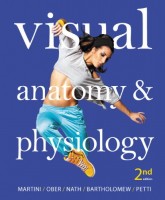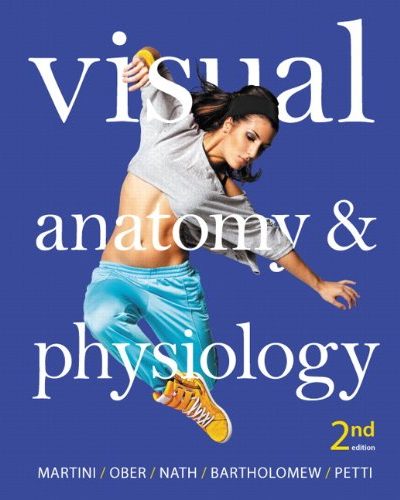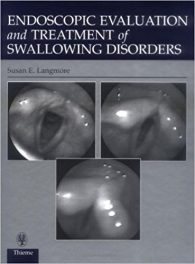 Authors: Frederic H. Martini, PhD; William C. Ober, MD; Judi L. Nath, PhD; Claire E. Ober, RN; Edwin F. Bartholomew, MS; Kathleen Welch, MD; Kevin P. Petti, PhD; and Ralph T. Hutchings
Authors: Frederic H. Martini, PhD; William C. Ober, MD; Judi L. Nath, PhD; Claire E. Ober, RN; Edwin F. Bartholomew, MS; Kathleen Welch, MD; Kevin P. Petti, PhD; and Ralph T. Hutchings
Publisher: Pearson – www.pearsonhighered.com – 1063 pages, plus appendices
Book Review by: Sonu Chandiram
The materials found in this book go beyond just presenting contents, which is typical of most anatomy and physiology textbooks. Each chapter provides you Learning Objectives which indicate in detail what you should be able to know and do after completing the study of each module in each section in each chapter.
For example, chapter 4 – Tissue Level of Organization – outlines three Sections at the beginning: Epithelial Tissue, Connective Tissue, Muscle Tissue and Neural Tissue and in each one, there are a number of Modules. You are provided a number of outcomes or results you must obtain by answering the questions listed in each Module.
Here is a sampling of questions on Epithelial Tissue you must know the answers to, to satisfy to yourself that you have learned the material in its eight Modules:
- Identify the four types of tissue in the body and describe their roles
- Describe three microscopy techniques
- Describe epithelial tissues, including cell shape, layers, and function
- Describe the types and functions of intercellular connections between epithelial cells
- Describe the structure and function of squamous epithelium
- Describe the structure, function, and locations of cuboidal and transitional epithelia
- Describe the structure, function, and locations of columnar epithelia
- Describe the structure, function, and locations of glandular epithelia
We present to you here an overview of what you will find in this book by listing its chapters:
- An Introduction to Anatomy and Physiology
- Chemical Level of Organization
- Cellular Level of Organization
- Tissue Level of Organization
- The Integumentary System
- Osseous Tissue and Bone Structure
- The Skeleton
- Joints
- Skeletal Muscle Tissue
- The Muscular System
- Neural Tissue
- The Spinal Cord, Spinal Nerves, and Spinal Reflexes
- The Brain, Cranial Nerves, and Sensory and Motor Pathways
- The Autonomic Nervous System
- The Special Senses
- The Endocrine System
- Blood
- Blood Vessels and Circulation
- The Heart and Cardiovascular Function
- The Lymphatic System and Immunity
- The Respiratory System
- The Digestive System
- Metabolism and Energetics
- The Urinary System
- Fluid, Electrolyte, and Acid-Base Balance
- The Reproductive System
- Development and Inheritance
Being that this is a visual textbook on anatomy and physiology, you will find many types of images to help you learn the subjects and topics covered in each chapter. Here are some:
- Clearly labeled parts of human anatomy and physiology in many body systems
- Full-color 3-D line drawings of cells, tissues, body parts, and higher levels of anatomy
- Geometric figures to help you understand the organizational levels of anatomical parts
- Micrographs of cells and tissues to see what they look like and study their structure
- Photos of people with sketches of their organs (and other anatomy) within those photos
- Tables that present an array of data and facts
This is a book that promotes active learning by not only asking questions at the beginning of the chapter, but also at the end. You are provided a Module Review at the end of each module, then a Chapter Review at the end of each chapter.
In addition, Mastering A&P is an online learning and assessment system designed by Pearson to help students learn, and to help instructors teach more efficiently. The system:
- Lets instructors easily assign media that is automatically graded
- Provides students with personalized coaching through answer-specific feedback and hints
- Motivates students to come to class prepared
- Easily captures data to demonstrate assessment outcomes
This is an excellent print and resource for learning anatomy and physiology because its approach is very proactive and results-based. The credit goes to the experts and educators listed below who authored the material in it and come up with this outstanding product.
Frederic (Ric) H. Martini, PhD is currently affiliated with the University of Hawaii at Manoa and has a long standing bond with the Shoals Marine Laboratory, a joint venture between Cornell University and the University of New Hampshire.
William C. Ober, MD is currently a Visiting Professor of Biology at Washington and Lee University, where he has taught several courses and led student trips to the Galapagos Islands.
Judi L. Nath, PhD is currently a biology professor at Lourdes University, where she teaches anatomy and physiology, pathophysiology, and medical terminology.
Claire R. Ober, RN, a former nurse, is a full-time medical illustrator. The textbooks illustrated by her for Medical and Scientific Illustration have won numerous design and illustration awards.
Edwin F. Bartholomew, MS has taught human anatomy and physiology courses at both the secondary and undergraduate levels and a wide variety of other courses (from botany to zoology).
Kathleen Welch, MD has been in private practice since 1987 and is licensed to practice in Hawaii and Washington State. With Dr. Martini, she has coauthored a textbook on anatomy and physiology and the A&P Applications Manual.
Kevin Petti, PhD is a professor at San Diego Miramar College. He teaches in human anatomy and physiology, human dissection, and health education. He is President Emeritus of the Human Anatomy and Physiology Society (HAPS).
Ralph T. Hutchings is a biomedical photographer and was associated with the Royal College of Surgeons for 20 years. An engineer by training, he has focused on photographing the structure of the human body.







